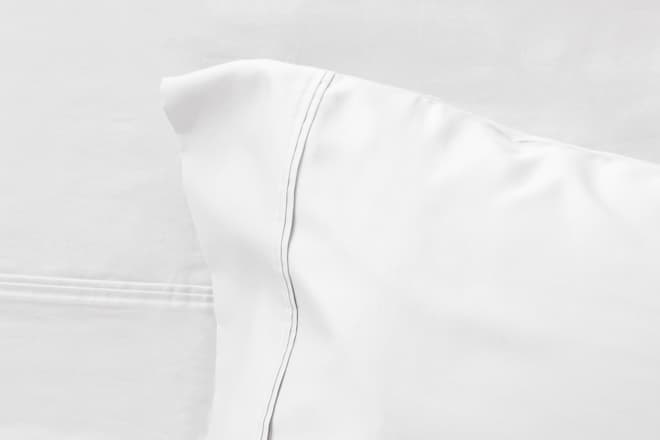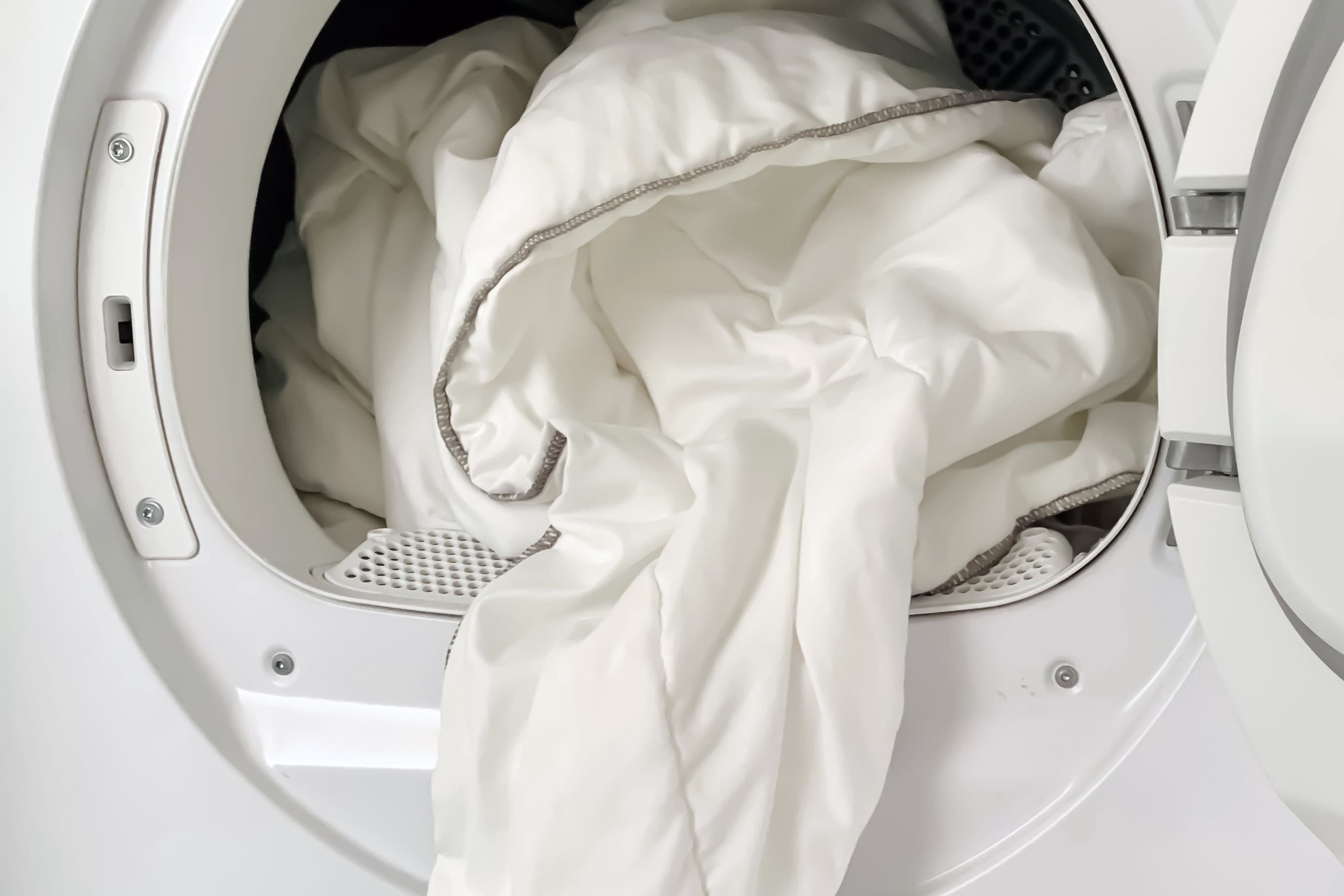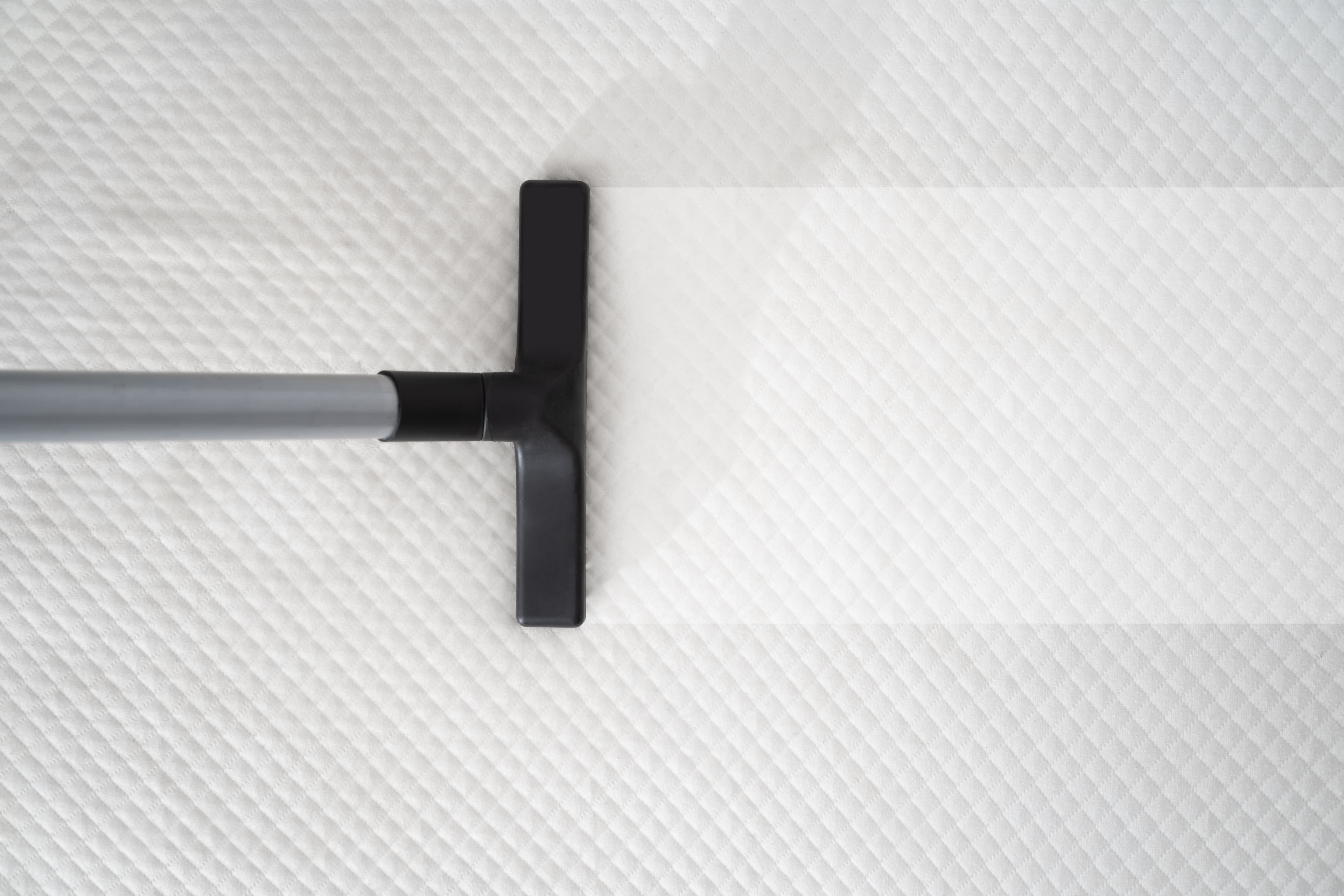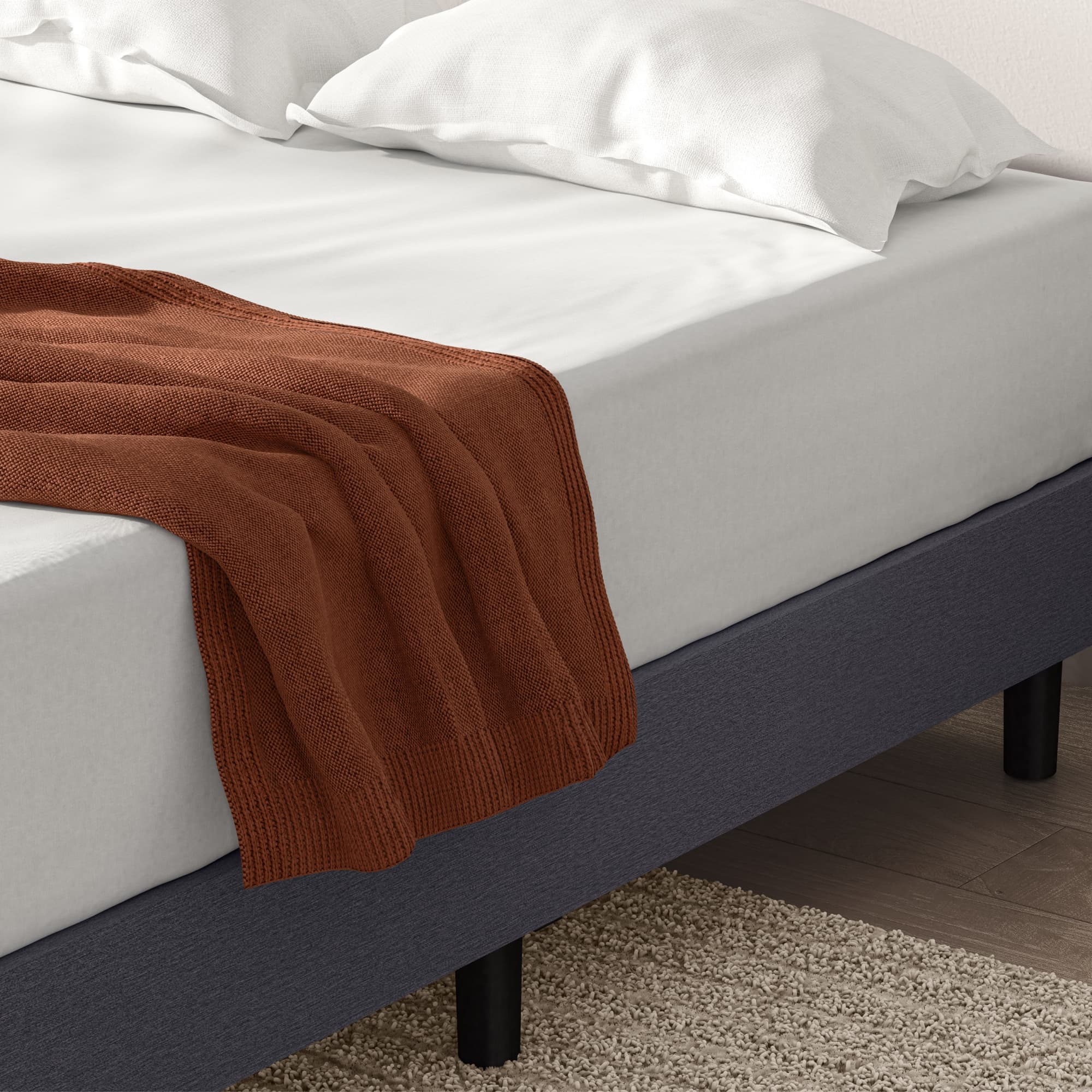Your bed should always be a fresh, clean space where you can relax and recharge. Keeping your comforter clean is part of the equation. Let's look at the best ways to wash a comforter.
It really depends on whether you sleep with a duvet cover. In general, if you have a cover, it should be washed about once a month to every six weeks. Unless it gets dirty or stained before then. You want to kill dust mites and remove things like dead skin cells, dust, smog, pet dander...the list goes on.

Spot Treat it First
The easiest way to clean a comforter is to try spot-cleaning it. If, for instance, your cat got sick on your comforter, the resulting stain may respond to stain remover. If it's a coffee stain try sopping up that stain with a clean cloth or some paper towels. Then, you could try covering the stained area with table salt or baking soda. You'll have to blot those substances away until all the coffee is absorbed.
White vinegar is another alternative cleanser some people favor.
At the very least, spot cleaning will stop the stain from spreading. If the stain isn't completely removed, it's time to go on to the next step.
Dry Clean Your Comforter
Many manufacturers recommend using a dry cleaner to professionally launder comforters. This is especially true for a down comforter. A dry cleaner has at least one large capacity washer, as well as the experience to keep your comforter in the best shape. They also have a commercial dryer.
There's something to be said for a professionally laundered comforter, and it's why some people prefer to dry clean their comforters. That said, if you have a large capacity washing machine at home, you can buy some down-specific laundry products if you're not comfortable with the impact dry cleaning can have on the environment.
Visit Your Local Laundromat
Many households may not have the washer capacity to take on cleaning a big, fluffy comforter at home. If that's the case, head to your local laundromat.
Of course, make sure you choose a laundromat with an oversized washing machine that can accommodate a bulky comforter. Oversized washers and dryers give your comforter plenty of room to soak, tumble, get clean, and thoroughly dry.
The washing process is simple if you use a gentle laundry detergent. Wash on the gentle or delicate setting using cold or warm water--not hot. Be sure to run your comforter through the rinse cycle twice to remove any soap residue and all the detergent.
Dry your comforter in the large-capacity dryer at a low heat setting. It'll take a bit longer to dry completely at such a low heat, but it will help distribute and dry your comforter.
For a down comforter, a low heat setting will more evenly dry the feathers. If you have a down alternative comforter or one that's synthetically filled, you can up the dryer's temperature slightly. Take your comforter out of the dryer and fluff it up every half hour.
No matter what, you want your comforter completely dry with no chance of moisture, mildew, or mold. If you find it's still a bit damp when you get home, you can hang it up outside or over the shower curtain rod or a drying rack for several hours until it's completely dry.
Many people recommend adding in a few tennis balls to help fluff the comforter. The low impact of the balls helps keep the comforter from wadding up and keeps it fluffy. If you use tennis balls, put them in some clean white socks to avoid potential staining. You can also use dryer balls, whether made of plastic or eco-friendly wool, or fluffer rings.
Wash a Comforter at Home
Some people prefer to wash their comforters at home. Just be careful to not overload your washing machine and dryer. That could damage your comforter--and possibly your machine. Many front-load washers have the capacity for a comforter.
A top-load washer often doesn't have a large capacity. Before washing, make sure there's enough room for your comforter in the machine. You want the comforter to have enough room to rotate and spin without getting caught on things or creating loose threads.
Before you wash a comforter at home, look to see if your comforter has any loose seams or tears. If it does, fix them before washing them. Washing can make existing damage worse.
If you feel like your comforter fits properly and you can wash and dry it completely at home, give it a try. If you have a down comforter, be sure to use a gentle or delicate cycle and use your machine's extra rinse option, if available. If your dryer has a bulky or bedding drying cycle, use that. For an extra dose of freshness, pick a warm sunny day and let your comforter dry naturally outside in the fresh air.
If you use a Duvet Cover, here's The Trick to Putting it Back on the Comforter
Putting your clean comforter into a clean cover can turn into a wrestling match. Here's our secret to putting on a duvet cover:
- 1: Turn the clean cover inside out
- 2: Place the open end of the cover at the foot of the bed
- 3: Add your clean comforter on top
- 4: Match up the corners
- 5: Roll the comforter from the head of the bed down to the foot
- 6: Take one end of the rolled comforter and pull it over the open end
- 7: Unroll it in the opposite direction
Voila! Close your cover with its snaps, buttons, zipper, or ties, and suddenly your bedroom is once again your sanctuary with fresh, clean bedding.
Caveats When you Wash your Comforter
If you have a down-filled comforter, be sure NOT to wash it with fabric softener. Why? Fabric softener leaves a waxy coating on fabric, which is why it's so good at fighting static. It also attaches to the feathers inside your down comforter and reduces the loft (the comforter's fluffiness).
A fabric softener can be used when washing other comforters, but we recommend using gentle detergent only.
Always use cold or warm water in your washer cycle when you wash a comforter. Not only can hot water harm the comforter's filling, but it can also weaken the fabric and fade colors. That's why you also want to avoid high heat when drying a comforter.
If someone in your household has been sick, it's a very good idea to wash and clean all of their bedding.
How Long Will This Take to Clean?
It is best to allow yourself at least three to four hours to wash a comforter. To begin washing your comforter, place it in the washing machine, add gentle detergent, set your washer cycle to delicate, and run with cold or warm water. You can then rewash your comforter on your quick cycle, without soap, to remove any residual detergent.
Next, you should thoroughly dry your comforter. Be sure to use a low or medium heat setting so your comforter will not get damaged by high heat.
To ensure the longevity of your comforter, we recommend only using your dryer on high for the first 20 minutes of a drying cycle when you are concerned about germs and allergens, and then lower the temperature for the remainder of the cycle to protect your comforter's down.
FAQs
Are you supposed to wash your comforter?
Absolutely. It's important to keep your comforter clean and fresh, just like you change your sheets every week. No, we don't recommend that you wash a comforter frequently. Once or twice a year is usually sufficient unless something gets spilled on it.
Can I put a comforter in the dryer?
Our guide to cleaning comforters gives you advice about how to best dry a comforter completely. Check out what type of comforter you use, since down comforters require special care and certain precautions while washing and drying them.
Does washing a comforter ruin it?
It shouldn't! Instead, washing a comforter should prolong its life and keep it looking and feeling its best into the future. Again, our guide provides you with many tips and tricks to not only protect your investment in a snuggly, cozy comforter. But also how to make sure you can wash a comforter without ruining it.
How Often Should You Wash Your Comforter?
A clean comforter is essential for your overall health and a good night's sleep. We recommend you clean your comforter every one to two months; however, if you sleep with a top sheet, preventing direct contact with it, you can clean it two or three times a year. Alternatively, if you don’t sleep with sheets, or experience frequent allergies, we suggest you wash your comforter weekly.
You may need to wash your comforter more frequently than you usually would. For example, if you or your sleeping partner have been feeling sick, clean your comforter as soon as they feel better. In addition, the quicker you clean your comforter after a spill or if you notice excessive dirt on it, the more likely the stain will come out with the first wash. Finally, if you are sensitive to pet dander, allergens, or bacteria, we suggest washing your comforter more frequently as comforters are prone to attracting allergens and dust mites.
To avoid shrinkage in some fabrics, we strongly advise washing your comforter in a warm water temperature rather than with hot water. If you do not have a large capacity washer, clean your comforter independently, without sheets. Often, bulky items group together in washers, resulting in pockets of detergent that do not distribute properly and, therefore, will not get your comforter thoroughly cleaned. Alternatively, you may be able to find large-capacity washers at a dry cleaner or laundry mat.
How to Hand Wash a Comforter?
In some cases, comforters made of delicate materials must be washed by hand because they can break down if they are washed in a washing machine. Hand-washing your comforter in the bathtub is the most effective way to do it at home. Start by filling the bathtub with warm water and mild laundry detergent.
Soak the comforter for ten minutes and gently swirl it in the water. Do not wring out your comforter, as it may damage or distort the filling. Instead, remove any excess water by gently pressing the fabric. Once you have drained the tub, rinse your comforter with warm water until soap suds have disappeared. Finally, you can hang dry the comforter or dry it in a dryer on the delicate or air dry setting.



